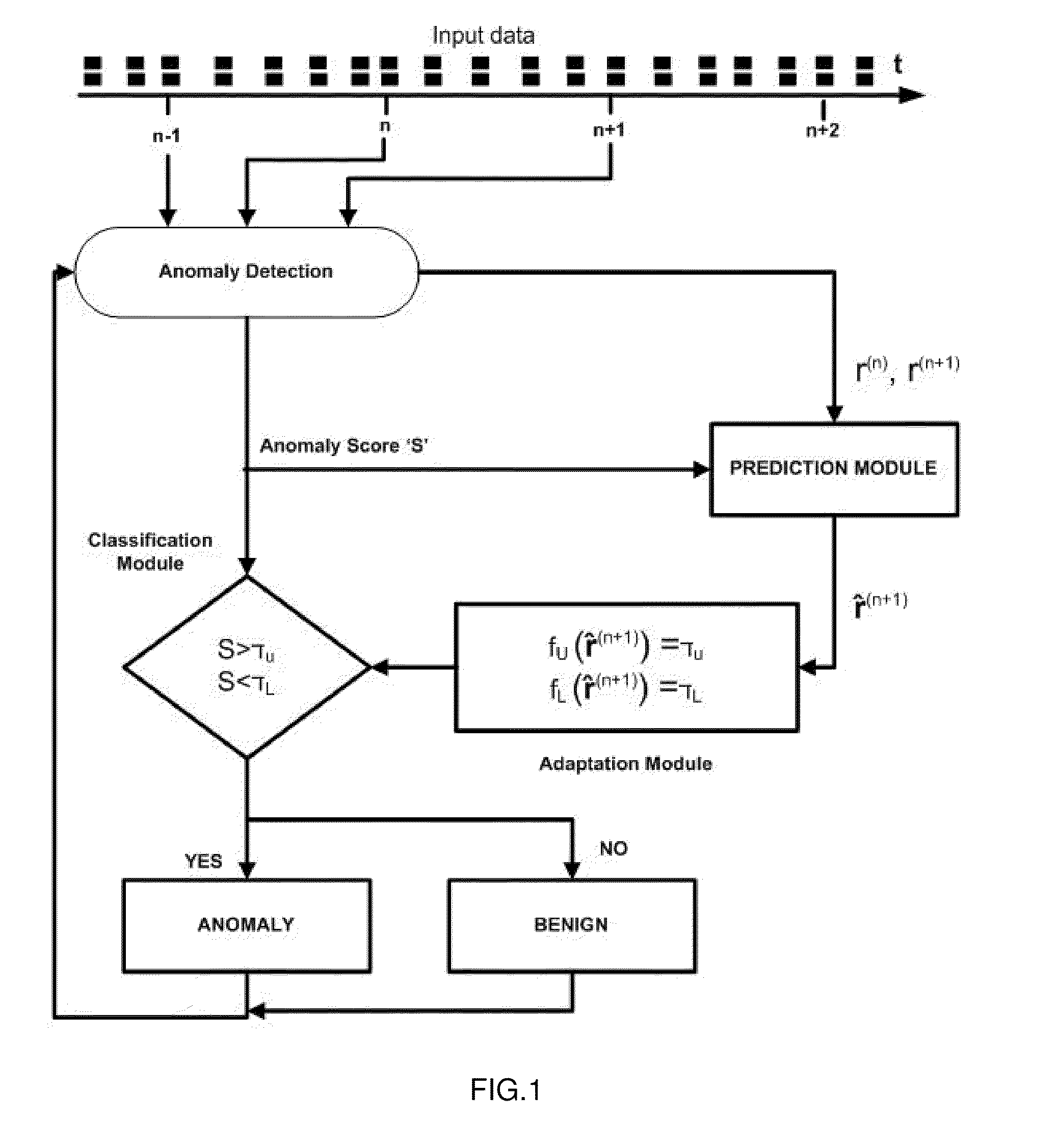Method and system for adaptive anomaly-based intrusion detection
an intrusion detection and anomaly technology, applied in the field of network security, can solve the problems of limiting the accuracy that the ids can potentially achieve, and achieve the effects of low run-time complexity and memory requirements, limiting accuracy, and high accuracy points
- Summary
- Abstract
- Description
- Claims
- Application Information
AI Technical Summary
Benefits of technology
Problems solved by technology
Method used
Image
Examples
Embodiment Construction
[0013]For any real time IDS, input traffic pattern changes considerably. Thus setting a fixed (time- and behavior-invariant) classification threshold cannot possible achieve good accuracy for such time-varying input.
[0014]A pertinent observation to this end is also that significant variations in input data characteristics are difficult to track. Instead, it is much easier to track the anomaly score of an IDS before application of the thresholding function. Hence, anomaly scores are easier to track because they reduce the high-dimensional input data to a relatively small set of scores. In addition to the complexity advantage, since these scores are coherent with input data characteristics, and as these scores comprise the domain of the thresholding function, it is intuitively likely that adaptively tracking anomaly scores yields better accuracy than direct tracking of input data. The rationale for the adaptive thresholding proposed in the present invention is to accurately predict th...
PUM
 Login to View More
Login to View More Abstract
Description
Claims
Application Information
 Login to View More
Login to View More - R&D
- Intellectual Property
- Life Sciences
- Materials
- Tech Scout
- Unparalleled Data Quality
- Higher Quality Content
- 60% Fewer Hallucinations
Browse by: Latest US Patents, China's latest patents, Technical Efficacy Thesaurus, Application Domain, Technology Topic, Popular Technical Reports.
© 2025 PatSnap. All rights reserved.Legal|Privacy policy|Modern Slavery Act Transparency Statement|Sitemap|About US| Contact US: help@patsnap.com



